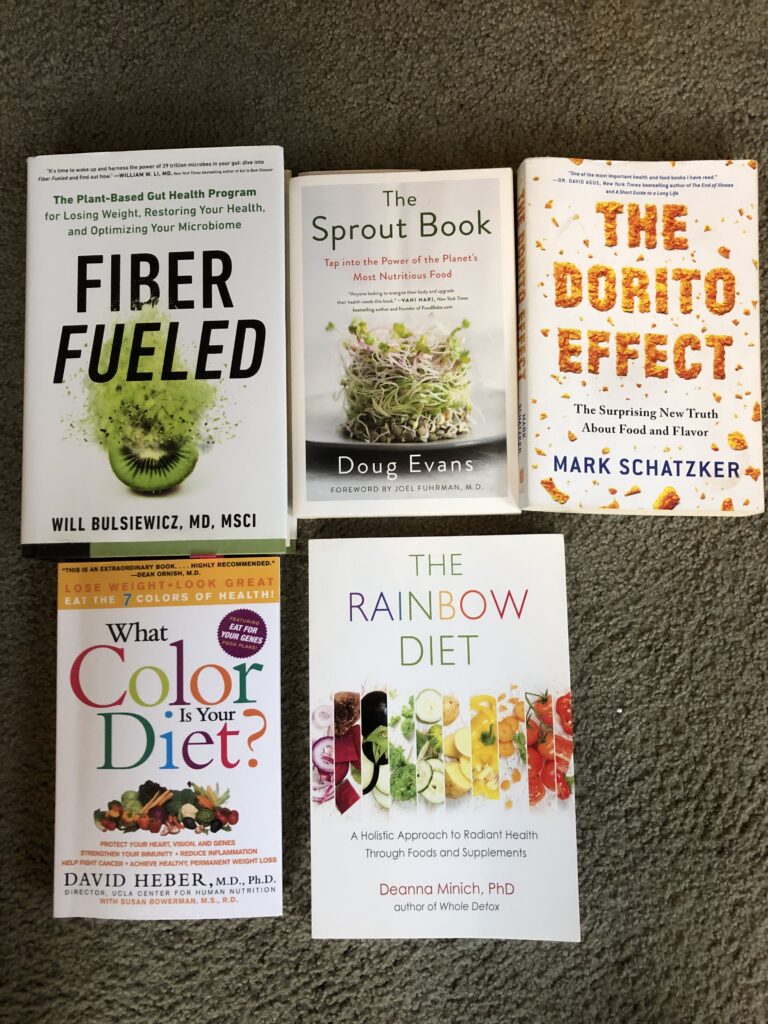
I just had to get Dr. Jed Fahey to come back to give us some practical tips on getting the benefits of phytonutrients (and fiber) into our diet. Too many of us, myself included, do not get enough variety of plants or enough fiber to maintain a diverse, resilient gut microbiome. The negative result on our health can be enormous. We not only don’t feel well, we have achy joints and foggy brains that suffer from a ever worsening, chronic and systemic inflammation in our bodies.
Thankfully, Jed agreed to come back to talk about some diet guidelines (things to do and not do) that we can follow to get pointed in the right direction and to keep making progress over time for better and better results.
Phytonutrients are the good stuff in plants that isn’t counted as carb, fat or protein, or as fiber or vitamin or mineral.
Episode 94: Phytonutrients are the 1% that make all the difference w/Dr Jed Fahey.
Want to support the show?
If you are enjoying WiseAthletes, a great way to support the show is by leaving a review on the Apple Podcasts. It only takes a few minutes and helps more people find the episodes. Thanks.
Dr Jed Fahey Bio
Dr. Fahey is a nutritional biochemist with extensive background in plant and human nutrition and phytochemistry.
Links to checkout:
- Wikipedia on phytochemicals
- Dr Jed Fahey’s website
- Food Compass — Tufts
- Dr B — Fiber Fueled
- Gerard E. Mullin, M.D.– Gut Balance Revolution
- The Rainbow Diet – Deanna M. Minich PhD
- What Color is Your Diet — David Heber MD PhD

Discussion Outline (not in order)
- What do you get in different colors of fruits and vegetables…why “eat the rainbow”?
- Some generally understood “good” things to add or increase or emphasize, such as “eat the rainbow”
- Some generally understood “bad” things to avoid and why, such as UPF and antibiotics
- Talk a bit about how the preparation of foods impacts the benefits we can get from our foods
- Touch on other possible ways to get phytonutrients: mixed greens powder, supplements, juicing vs. blending, prebiotics (food for biome), other?
- [We didn’t get to this topic due to time constraints] Talk a little bit about athletic performance improvements from phytonutrients, such as NO from nitrites in food. Stimulants, blood flow boosters, not to mention anti-inflammatory and antioxidant effects
Below are my rough notes from Dr Fahey’s discussion about “sources and benefits of phytonutrients”
Today is for the person who wants to build a more resilient health status, to get the most benefit from the diet lever of health and longevity and of athletic performance. A healthy athlete is a strong athlete.
Some things that are not optimal and perhaps subtract from a healthy lifestyle
- don’t eat much ultra processed foods (UPF) …and what is added that is bad, and what is lost?
- don’t eat the same things all the time.…increases the chance of immune issues and decreasing benefit from “tolerance”?
- avoid carpet bombing your body with antibiotics, if at all possible. It takes at least 1.5 months to recover from antibiotics, and perhaps much longer. Probiotics don’t help and might delay recover (a drop of dye in the ocean)
- minimize alcohol in drink and mouthwash…why kill the bacteria?
- UPF — Defined by researchers as “snacks, drinks, ready meals and other products created mostly or entirely from substances extracted from foods or derived from food constituents with little if any intact food” and often highly convenient and palatable. Some “evidence on the association between UPF consumption and inflammation but there is certainly evidence that artificial sweeteners and additives can alter the makeup of microorganisms found in the gut, making it a more inflammatory environment.”
Some basic rules target sufficient volume & diversity of phytonutrients (and other plant matter):
- Some good ideas that may have diminishing returns…try to do better over time, and listen to your body. Don’t let “perfect” be the enemy of the “good”.
- eat the rainbow (including white, black, and brown)…herbs and spices and teas and coffees are plants too
- eat in diversity (>30 types of plants each week)…maybe this translates into ~5 per color each week. Not servings because can include spices, drinks, etc.
- eat 4-7 servings per day…doesn’t add up to many calories, so this is just to enjoy, feel satiated, get healthy,
- eat with the seasons (drives diversity and avoiding “tolerance” and any chance of buildup of bad stuff in a particular source: selenium, arsenic, etc.).
- eat fresh & local if you can, but frozen is just as good.
- prepare plants for eating in a way to improve (not destroy) the benefits…(some are helped by cooking, some are better raw)
- chew food completely…savor the food.
- drink plenty of water while eating (or tea).
What do you get in each color? What are very good plants to eat to get each color
- polyphenols and carotenoids dominate
- include while, black and browns in the “rainbow”
- The Rainbow Diet book
- What Color is Your Diet book
Other possible ways to get phytonutrients
- mixed greens powder
- supplements
- juicing vs. blending
- prebiotics (food for “bugs”)
- probiotics?
What about athletic performance? What phytonutrients are known to help?
- Athletic performance: caffeine from coffee and teas, nitrates from beets to NO, cacao in chocolate is high in the alkaloid theobromine (caffeine and theobromine are Methylxanthines), guarana fruit is a powerful natural stimulants … contains caffeine, theophylline, and theobromine, yerba mate contains several nutrients, such as xanthines, caffeoyl derivatives, saponins, and polyphenols,
- lower inflammation from a healthy gut and improved blood flow will improve recovery from exercise. SCFA, antioxidants,
Wrap up
- fiber is the primary driver of gut health but fiber comes with phytonutrients if you eat plants vs fiber supplements or UPF with little fiber. The goal is a diverse microbiome that you get by eating a wide variety of plants.
- fiber feeds the bugs. Phytonutrients also feed the bugs but they also provide may other benefits to the body.
- organic produce provides more phytonutrients and avoids the pesticides that can injure the gut.
- UPF injure the gut with chemicals and by taking up a share of the plate with foods missing food for the bugs. Eat real food
- how to do this if you are not a fan of plants? You have to find your way in. Find a way to find pleasure in eating healthy foods. Healthy foods taste great, especially after you stop eating artificially hyper palatable UPS.
- Don’t let your need for comfort foods block you from finding health and pleasure in healthy foods. Comfort food is not about hunger.
- Chew food completely
- Don’t eat while doing other stuff…focus on the food and the company you are with to enjoy the flavors and textures of the natural foods. This is how you learn to like eating plants.

